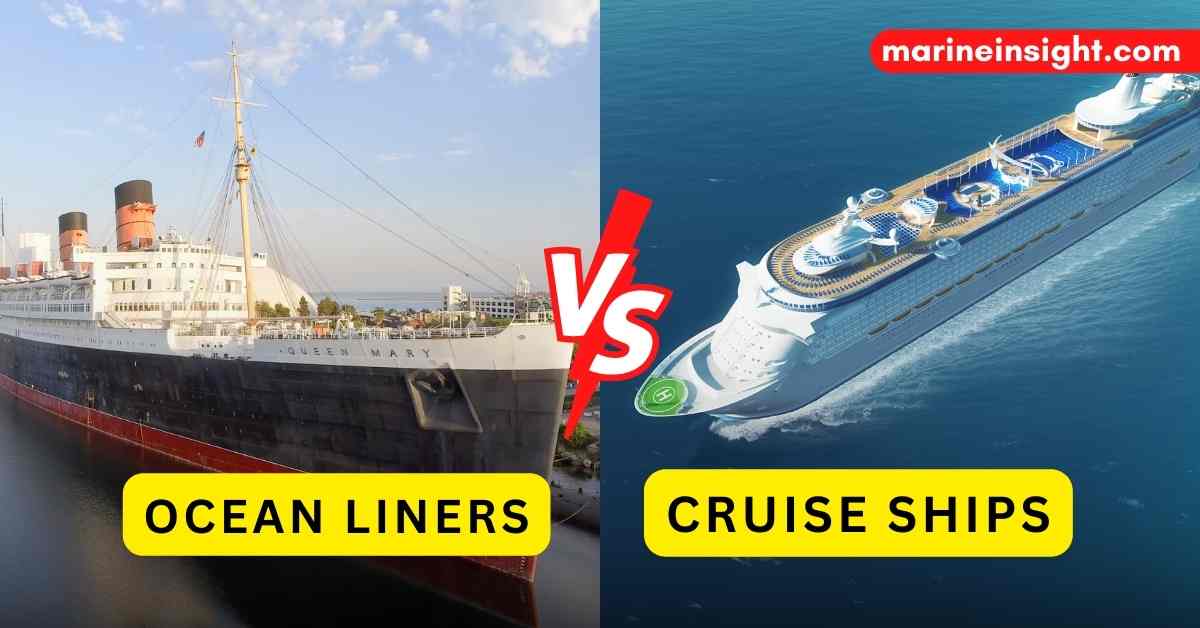Ocean liners are a type of passenger ship that transport people and cargo across oceans and seas. They can also be used for other purposes, such as hospital ships or pleasure cruises.
Quick Navigation
What are Ocean Liners types?
An ocean liner is a large passenger ship used for long-distance travel across oceans and seas. These massive vessels are designed to carry thousands of passengers and cargo, providing a luxurious and comfortable mode of transportation.
Ocean liners have a fascinating history dating back to the mid-19th century. They were initially developed to transport immigrants and cargo between continents but soon evolved into the epitome of luxury travel. With elegant interiors, opulent cabins, exquisite dining options, and a wide range of onboard amenities, ocean liners quickly became a symbol of wealth and prestige.
Features of Ocean Liners
Let’s take a closer look at some of the key features that make ocean liners unique:
Size
Ocean liners are colossal in size, measuring several hundred feet in length and weighing thousands of tons. They are designed to withstand rough sea conditions and provide a stable and smooth sailing experience.
Passenger Accommodation
Ocean liners offer a plethora of accommodation options, ranging from luxurious suites to more affordable cabins. Passengers can enjoy comfortable beds, private bathrooms, and stunning ocean views during their journey.
Onboard Amenities
These magnificent ships are equipped with an array of amenities to keep passengers entertained throughout their voyage. From swimming pools and fitness centers to theaters and shopping boutiques, ocean liners offer a complete travel experience that rivals the finest hotels.
Cruise Itineraries
Ocean liners operate on specific routes, following carefully planned itineraries that explore different regions of the world. Passengers can embark on a memorable journey, visiting multiple destinations along the way and experiencing diverse cultures and landscapes.
The Golden Age of Ocean Liners
During the early 20th century, ocean liners reached their peak in terms of luxury and popularity. This era, known as the “Golden Age of Ocean Liners,” saw the construction of some of the most iconic ships in history.
These grand vessels, including the Titanic, the Queen Mary, and the Normandie, offered unprecedented levels of comfort and elegance. They featured lavish ballrooms, glamorous lounges, and exquisite dining salons adorned with fine art and luxurious materials.
Passengers would dress in their finest attire to enjoy extravagant parties, live music performances, and gourmet meals, creating an atmosphere of magnificence and sophistication onboard.
The Decline and Transformation
With the advent of commercial air travel in the mid-20th century, the popularity of ocean liners began to decline. Airplanes provided a faster and more convenient way to travel long distances, shifting the focus away from ocean crossings.
Many ocean liners were either retired or repurposed for other uses. Some ships were converted into cruise ships, catering to vacationers seeking a leisurely experience at sea. These modern cruise ships offered a different type of luxury, focusing more on entertainment and recreational facilities rather than the grandeur of the past.

Credit: www.marineinsight.com

Credit: www.usatoday.com
The Legacy of Ocean Liners
Although the era of transatlantic ocean liners may have faded, their legacy continues to captivate the imaginations of people around the world. Many historic ocean liners have been preserved as museums or floating hotels, giving visitors a glimpse into the bygone era of luxury travel.
Additionally, the allure of these magnificent ships has inspired filmmakers, authors, and artists to create countless stories and works of art. The tragic sinking of the Titanic, for example, has been the subject of numerous films and novels that have immortalized the ocean liner in popular culture.
Frequently Asked Questions:
What Is The Purpose Of Ocean Liners?
Ocean liners are large ships designed to transport passengers across vast bodies of water, such as oceans.
How Are Ocean Liners Different From Cruise Ships?
Ocean liners are built for transportation, while cruise ships are primarily designed for leisure and entertainment.
Are Ocean Liners Still In Use Today?
While many ocean liners have been retired, some are still in service, offering unique travel experiences to passengers.
How Fast Can Ocean Liners Travel?
Ocean liners can reach impressive speeds, with some capable of cruising at over 30 knots, ensuring efficient and timely journeys.
Conclusion
Ocean liners were once the epitome of luxury and elegance, offering passengers a remarkable experience as they traveled across vast oceans. Today, while their role has transformed, the history and allure of these magnificent ships continue to captivate and inspire people worldwide.
